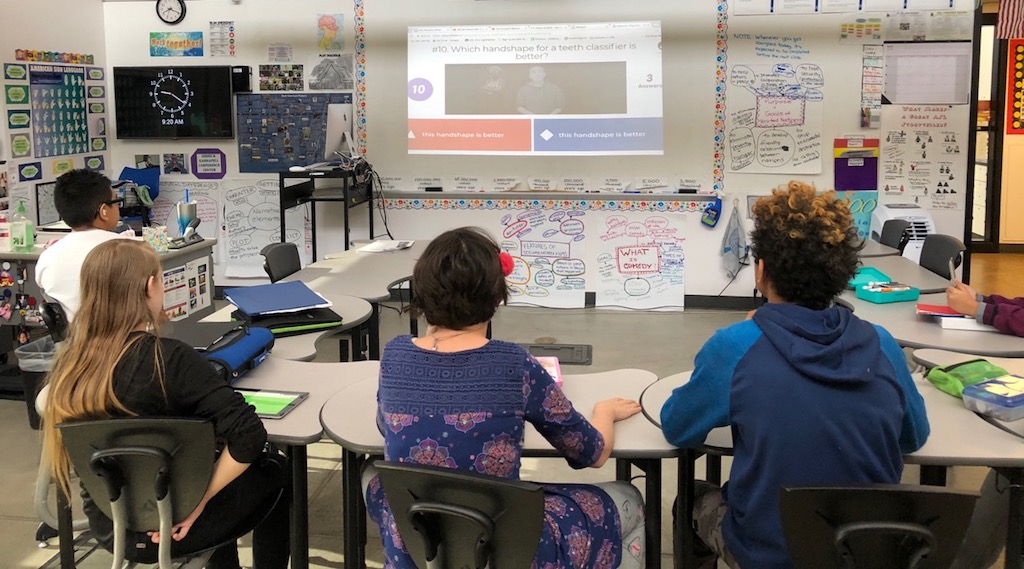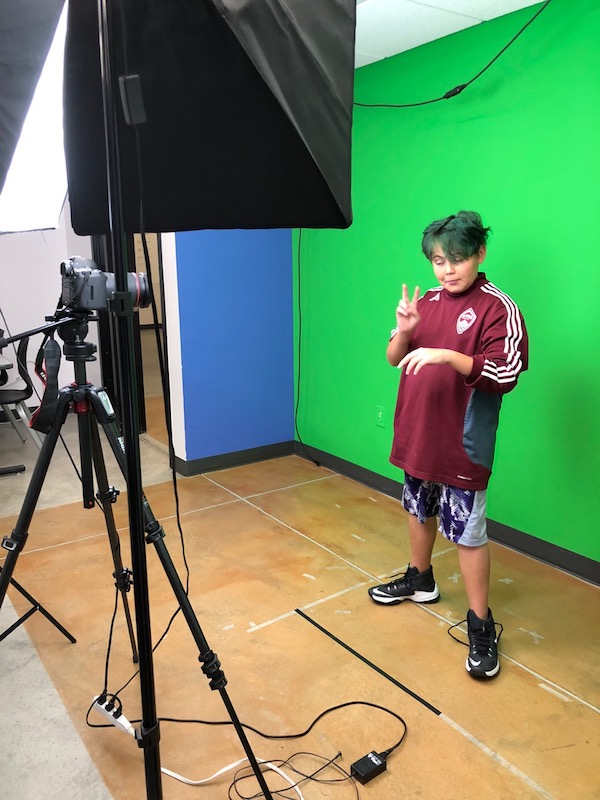There are so many things in this classroom story that we think deserve celebrating! We’re proud to amplify it on our blog so that you too can get inspired by Barbara and her students. They’re not just a class – they work together like a creative production studio: creating kahoots in sign language, filming videos to be part of the questions, and sharing the awesome content with other learners.
I teach Arts to deaf heritage learners with ASL (American Sign Language) as their primary language. Similar to ELA, this subject helps kids improve literacy and develop their critical thinking and creative skills.
Kahoot! became a great addition to my classes: it’s fun, works really well as an assessment tool and gave us some innovative ideas for classroom collaboration. Together with my students, we film videos that we later use in games. Here’s how we connect ASL and the language of play when creating kahoots.

Classroom collaboration: filming videos in ASL for kahoots
In my experience, Kahoot! is most impactful when you involve students in game creation, not just playing. Together with my learners, we produce great games for other classes to use and we film short clips in ASL to use in questions.
The main goal of our kahoots is to assess student understanding of appropriate handshapes when using ASL classifiers. For example, earlier this year I used Kahoot! to follow up for our annual Literacy Night with families in the community so that they can play it at home as a family activity night. Its theme was “Paws for Books”, so we created a variety of handshapes to use for describing body part classifiers for pets/animals.
When we select a topic from the ASL Arts curriculum, we begin by brainstorming questions and working in small teams to figure out how we can showcase them in video. Learners draft video scripts and then we discuss together as a class if the concepts are correctly used in ASL, and finally, revise it to a final draft.
We use colored backgrounds in the video that are similar to the Kahoot! colored answer tiles for them to select. We find that repeating the question twice works best for participants to recall the correct answer. Here’s my student Alejo during filming:

Bridging ASL to English through the language of play
As I mentioned, Kahoot! serves as an excellent tool to review students’ understanding of the right handshapes when using classifiers. In addition to that, it can be also used to bridge from ASL to English. I created a follow up chart to use after playing kahoots to practice vocabulary in both ASL and English. The chart helps students apply their knowledge in a hands-on exercise and empowers them to improve their writing skills.
Motivated and interested students perform better
I noticed that involving students in creating games motivates them even more and their scores significantly increase in follow up games. When we spend more time on reviewing different hand shapes, their skills in expressing their stories using classifiers improves. Of course, they also like to compete with each other, trying to perform the best they can. You can see the excitement on their faces when playing the game:

For me as a teacher, Kahoot! helps a lot with formative assessment. I would use the platform again and again with new students as I look forward to building a resource assessment library using kahoots. I often share our kahoots for formative assessment with other ASL Arts teachers through the ASLCIA.com website where I’m part of the nation-wide team.
Develop great kahoot creation skills in 5 steps
Here are my tips for getting the most out of Kahoot! when co-creating games with your students.I hope they help those of you who are just getting started!
1. Play existing games to get the gist of it
Before you involve students in creating their own kahoots, start by playing existing games. Getting familiar with different formats will help them visualize the design of their future kahoot.




